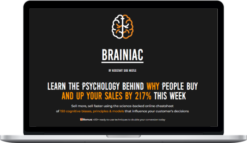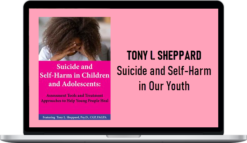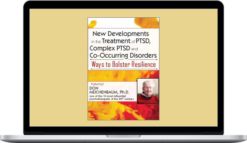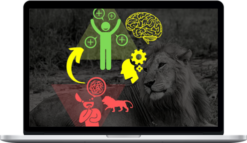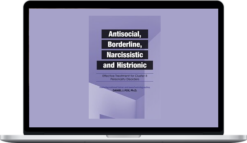NICABM – How To Work With Deep Feelings Of Emptiness
$197.00 $89.00
»Delivery: Within 21 days
Description
NICABM – How To Work With Deep Feelings Of Emptiness
Filling the Void: Why So Many Emotional Issues Tie in with a Deep Sense of Emptiness
“What’s the point of trying? I just don’t feel anything. I feel dead inside.”
If you’ve ever heard a client express these thoughts, there’s a good chance they’re feeling a sense of emptiness.
And here’s the thing – even if emptiness isn’t the main issue that brought your client to therapy (and it usually isn’t) . . .
. . . it can so often factor in – whether you’re treating depression, trauma, attachment wounds, grief, or even (and perhaps especially) borderline personality disorder.
And for some clients, no matter how much progress they’ve made, they still struggle to feel meaningful connection to their life, body, or relationships.
So to give you strategies to help your client shift out of a numbing sense of emptiness, we brought together 21 of the world’s top experts for this brand-new short course.
How to Work with Deep Feelings of Emptiness
How to Treat Feelings of Emptiness That Stem from Attachment Wounds
Richard Schwartz, PhD Janina Fisher, PhD Pat Ogden, PhD
Deany Laliotis, LICSW Stan Tatkin, PsyD, MFT Dan Hill, PhD
Laurel Parnell, PhD
- An IFS approach to treat attachment wounds that leave clients feeling disconnected
- How EMDR can help target feelings of emptiness that began in childhood
- How to work with emptiness in the context of avoidant vs. anxious attachment styles
- Two ways that clients rely on emptiness to help cope with attachment wounds
The Inextricable Link Between Emptiness and Borderline Personality Disorder (and How to Work with It)
Daniel Fox, PhD
- Specific factors that can help you differentiate BPD from other disorders
- How to work with clients who present with both BPD and depression
- Strategies to navigate your client’s defense strategies when they’re activated in session
- One key antidote to feelings of emptiness in clients with BPD
How to Work with Trauma-Induced Feelings of Disconnection and Numbness
Janina Fisher, PhD Stephen Porges, PhD
Pat Ogden, PhD Bonnie Goldstein, PhD Chris Willard, PsyD
- Why the nervous system can be key to treating clients who feel numb after trauma
- Interventions that can be counterproductive (or even contraindicated) when working with emptiness and trauma
- One simple (but critical) question to help shift a client’s experience of emptiness
- How trauma can hijack a client’s sense of purpose (and how that might impact your approach)
How to Treat Emptiness as a Symptom of Depression
Laurel Parnell, PhD Michael Yapko, PhD Lynn Lyons, LICSW
Zindel Segal, PhD Chris Willard, PsyD Dan Hill, PhD
Christine Padesky, PhD Kelly Wilson, PhD Miguel Gallardo, PsyD
- Strategies to help clients reconnect to life and build meaning
- How to chip away at a depressed mindset and increase a client’s motivation to change
- Two key questions to include in your assessment of depression and emptiness
- A common misconception about treating feelings of emptiness (and what to try instead)
How to Interrupt Cycles of Emptiness, Isolation, and Disconnection
Stephen Porges, PhD Deany Laliotis, LICSW Ellyn Bader, PhD
Deb Dana, LCSW Christine Padesky, PhD Miguel Gallardo, PsyD
- Two distinct dynamics of disconnection (and how to work with each)
- How isolation can become a self-fulfilling prophecy (and how to disrupt it)
- How to help shift behaviors that sabotage opportunities to connect with others
- Why a client might feel disconnected in seemingly healthy relationships
How to Work with Feelings of Emptiness That Are Tied to Grief or Loss
Pat Ogden, PhD Shelly Harrell, PhD Bonnie Goldstein, PhD
Christine Padesky, PhD Laurel Parnell, PhD Charles Ridley, PhD
- How to work with a sense of emptiness that stems from a traumatic loss
- One exercise to try when grief blocks a client’s ability to experience positive emotions
- How a client’s movements can cue you in to their experience of grief and emptiness
Course Instructors
Ruth Buczynski, PhD
Dr. Ruth Buczynski is a licensed psychologist and founder and president of The National Institute for the Clinical Application of Behavioral Medicine (NICABM). NICABM helps physicians, nurses, psychologists, social workers, and counselors – practitioners who have some of the most significant and life-changing missions on the planet – provide cutting-edge, research-based treatment strategies to their patients. For more than 35 years, NICABM has offered accredited training and professional development programs to thousands of practitioners worldwide.
Megan Schmidt, PsyD
Dr. Megan Schmidt is a program developer at NICABM and a licensed clinical psychologist in private practice in Washington where she specializes in neurobiological and somatic approaches to trauma treatment. Prior to joining NICABM, Megan assisted the Sensorimotor Psychotherapy Level I Trauma course in Seattle, WA.
About NICABM
We proudly provide continuing education for practitioners who are dedicated to being the best in their craft. Our goal is to develop programs that connect you with the top experts and the latest strategies in the field, to help you achieve better outcomes, more quickly with each of your clients.
More courses from the same author: NICABM
Delivery Policy
When will I receive my course?
You will receive a link to download your course immediately or within 1 to 21 days. It depends on the product you buy, so please read the short description of the product carefully before making a purchase.
How is my course delivered?
We share courses through Google Drive, so once your order is complete, you'll receive an invitation to view the course in your email.
To avoid any delay in delivery, please provide a Google mail and enter your email address correctly in the Checkout Page.
In case you submit a wrong email address, please contact us to resend the course to the correct email.
How do I check status of my order?
Please log in to HealthcareCourse account then go to Order Page. You will find all your orders includes number, date, status and total price.
If the status is Processing: Your course is being uploaded. Please be patient and wait for us to complete your order. If your order has multiple courses and one of them has not been updated with the download link, the status of the order is also Processing.
If the status is Completed: Your course is ready for immediate download. Click "VIEW" to view details and download the course.
Where can I find my course?
Once your order is complete, a link to download the course will automatically be sent to your email.
You can also get the download link by logging into your HealthcareCourse account then going to Downloads Page.
Related products
Total sold: 2
Total sold: 2






